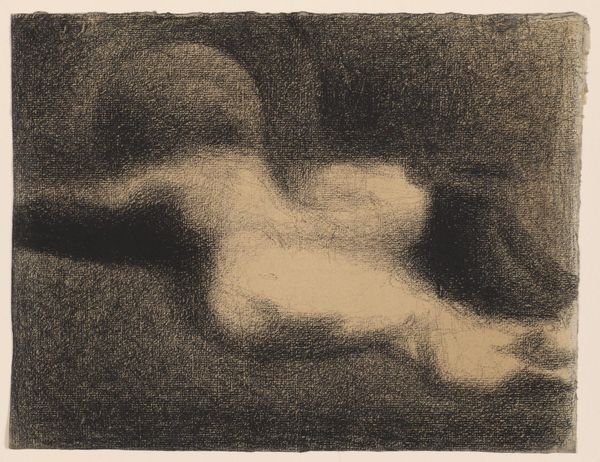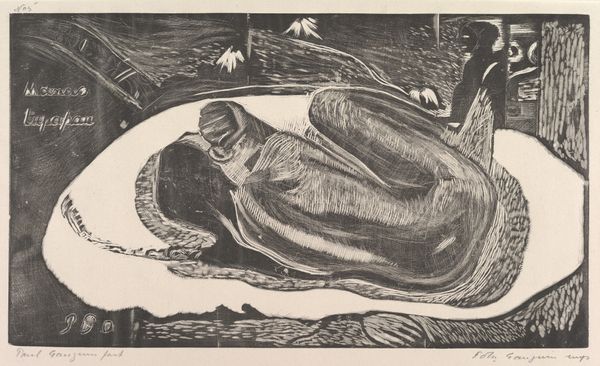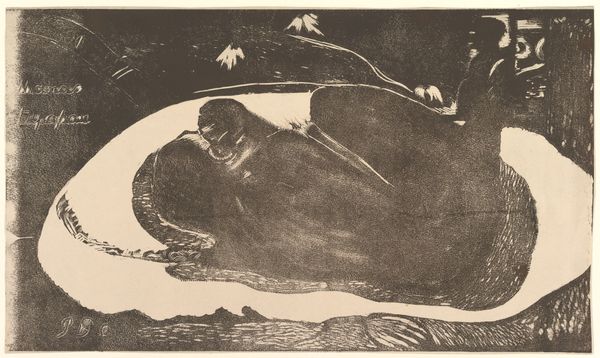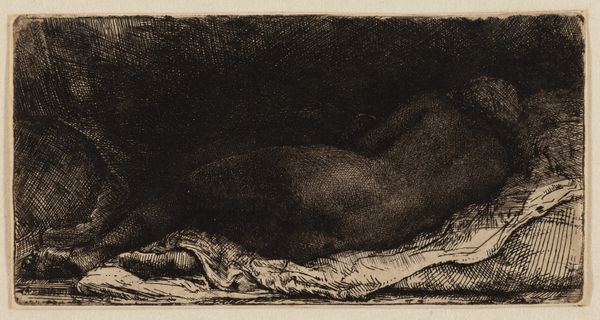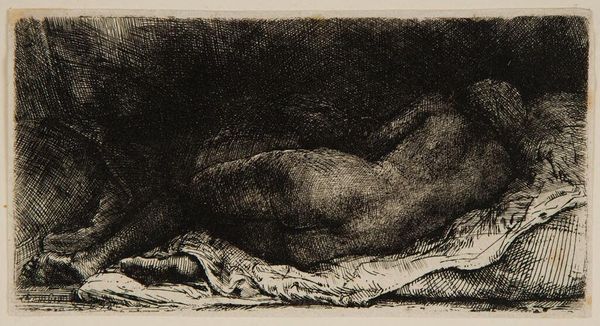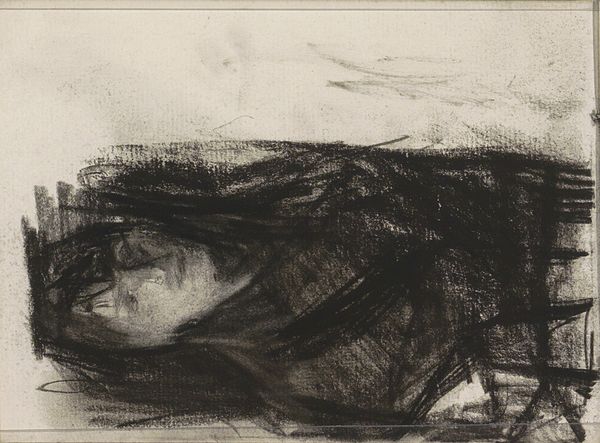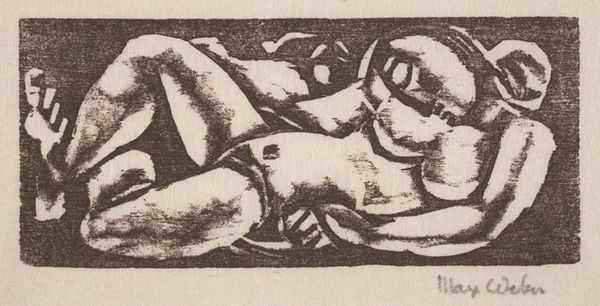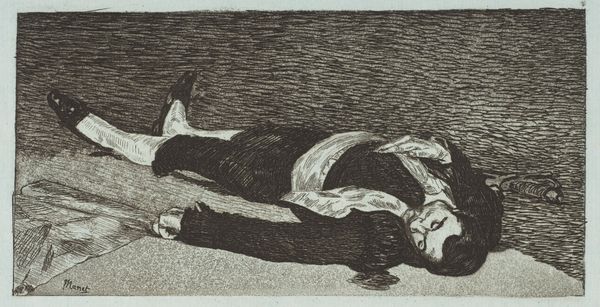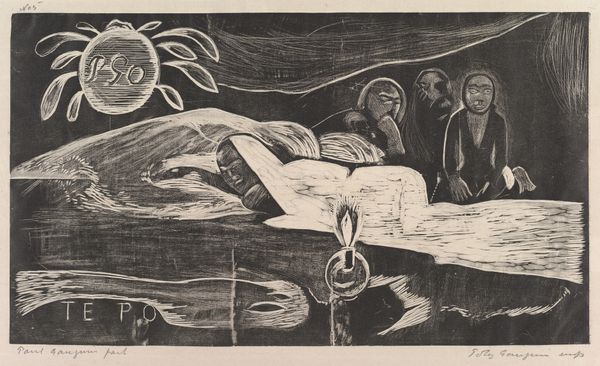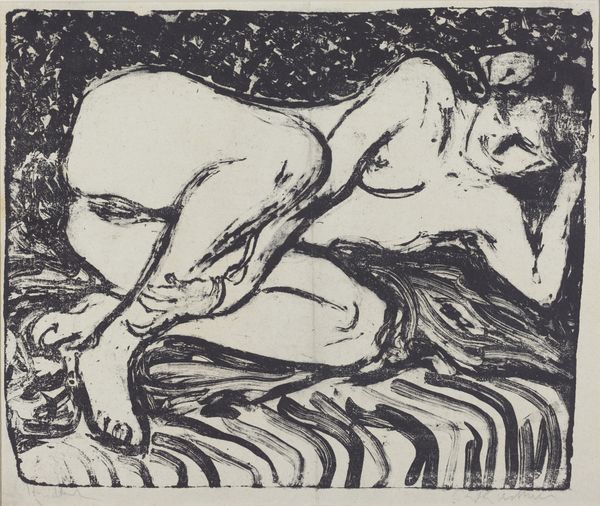
drawing, print, graphite, charcoal
#
drawing
# print
#
pencil sketch
#
landscape
#
charcoal drawing
#
momento-mori
#
pencil drawing
#
surrealism
#
symbolism
#
graphite
#
charcoal
#
nude
Dimensions: 4 x 10 1/2 in. (10.16 x 26.67 cm) (plate)
Copyright: No Copyright - United States
Editor: Here we have August Brömse’s "A Dead Woman," created in 1907 using graphite and charcoal. It's a rather striking image—the contrast between the lifeless woman and the figure looming over her is really intense. What do you see in this piece? Curator: What immediately grabs me is the intersection of the nude female form with the figure of death. It speaks volumes about how society has historically framed women's bodies as objects, even in death. Think about the "male gaze" and its pervasiveness in art history—does this image reinforce or subvert that gaze? Editor: I hadn’t considered that. It’s like the woman has no agency, even in her own death. But why do you bring up the male gaze? Curator: Well, consider the Symbolist movement to which Brömse was connected. There's this obsession with the female figure, often presented as either saintly or demonic. In this piece, is the woman being mourned, or is her death merely another spectacle for a predominantly male audience? And, perhaps more critically, what does it say about the cultural anxieties surrounding female sexuality at the turn of the century? Editor: That definitely reframes how I see the piece. So, it's not just about death, but about the cultural significance projected onto women's bodies. The skeleton hovering over her, is it grief or possessiveness? Curator: Precisely! Think about feminist interpretations of mythology and art; so many female figures meet tragic ends. Brömse places that cultural obsession on full display, and it invites us to question those entrenched narratives. Is this a statement about mortality or a commentary on societal views of women? Editor: It’s powerful to think about art as a mirror reflecting social and political issues of the time, still relevant today. I’ll definitely be looking at art with a more critical perspective from now on! Curator: That's precisely why art history matters – to ignite that critical consciousness. By examining these layers, we don’t just understand the past; we begin to challenge the present.
Comments
minneapolisinstituteofart about 2 years ago
⋮
On a dark, starless night, seemingly illuminated only by an unseen moon, Death cradles the head of a woman, who with the aid of a serpent, floats just above the water. August Brömse, a Symbolist follower of Max Klinger, based his darkly erotic print series, Death and the Maiden, on his fraught love affair with singer Elsa Schünemann. The two went on to marry in 1910, once Brömse had become head of the printmaking studio at Prague's Academy of Fine Art.
Join the conversation
Join millions of artists and users on Artera today and experience the ultimate creative platform.

